Description
Spice up your culinary knowledge with this deep dive into the world of peppercorns. Many assume that white and black pepper are one and the same—but is that really true? In this article, we’ll explore their origins, flavor profiles, culinary uses, historical context, storage methods, and common misconceptions. Whether you're a home cook seeking practical kitchen insights or a culinary enthusiast exploring spice nuances, this guide delivers actionable knowledge to elevate your cooking precision and flavor understanding.
Table of Contents
- The Origins of Peppercorns
- Historical Context: Why White Pepper Dominated European Cuisine
- White vs. Black Pepper: Core Differences
- Flavor Profiles Compared
- Culinary Applications Guide
- Optimal Storage Techniques
- Top 5 Practical Usage Tips
- Myth Debunking Analysis
- Frequently Asked Questions
- Conclusion
The Origins of Peppercorns
Both white and black pepper originate from Piper nigrum, the pepper vine native to India's Malabar Coast. This vine produces berry clusters that transform into distinct pepper varieties based on harvest timing and processing methods.
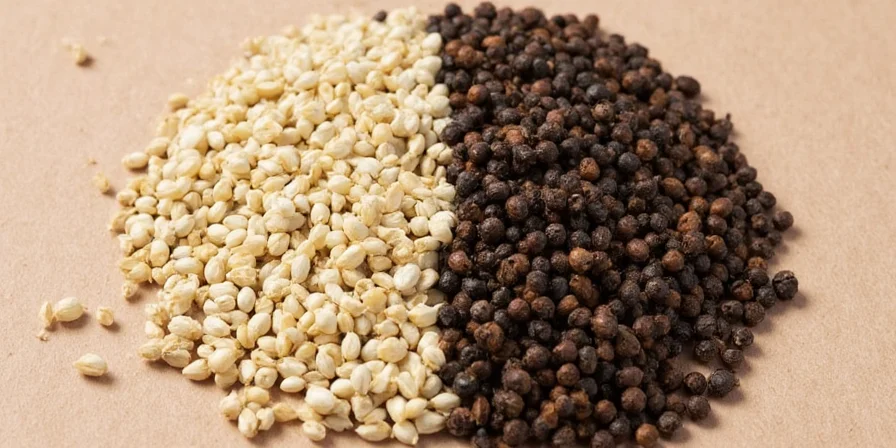
The Piper nigrum vine in its natural habitat
Black Pepper: The Unripe Berry
Harvested while green and unripe, these berries undergo sun-drying where oxidation turns them dark brown to black. This process creates their signature wrinkled texture and bold, sharp flavor profile rich in piperine.
White Pepper: The Mature Berry
Allowed to fully ripen to red, these berries undergo a natural enzymatic fermentation during soaking. The outer pericarp is then manually removed before drying the pale inner seed, resulting in a smoother, earthier profile.
Historical Context: Why White Pepper Dominated European Cuisine
Medieval European aristocracy preferred white pepper not for taste, but presentation. Its speck-free appearance maintained the pristine visual quality of light-colored sauces and dishes—a critical status symbol in courtly dining. This historical preference established culinary traditions still influencing French and Central European cooking today, where white pepper remains standard in béchamel and seafood preparations. Unlike modern misconceptions, this wasn't about flavor superiority but social signaling through food aesthetics.
White vs. Black Pepper: Core Differences
Key distinctions extend beyond color. Here's a precise comparison:
| Characteristic | Black Pepper | White Pepper |
|---|---|---|
| Harvest Time | Unripe (green) | Ripe (red) |
| Processing Method | Sun-dried immediately after picking | Soaked 7-10 days, pericarp removed, then dried |
| Flavor Profile | Sharp, citrusy, with floral notes | Mellow, earthy, subtle fermented undertones |
| Piperine Content | 5-9% (higher heat intensity) | 3-5% (reduced pungency) |
| Culinary Best Use | Grilled meats, robust sauces, spice rubs | Cream-based sauces, delicate fish, potato salads |
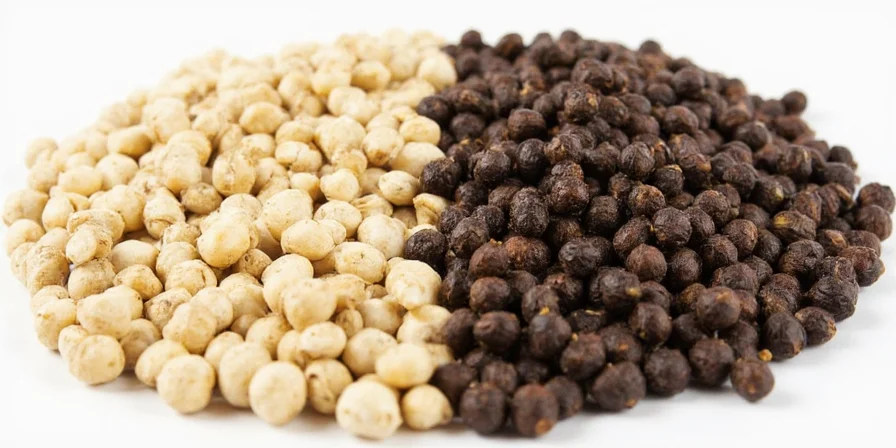
Black and white pepper side by side
Flavor Profiles Compared
Direct sensory comparison reveals critical differences:
- Black Pepper: Immediate pungent heat from piperine, with complex top notes of pine and citrus. Ideal for cutting through fatty dishes like steak or roasted vegetables.
- White Pepper: Gradual warmth with earthy, musty base notes from fermentation. Lacks black pepper's volatile top notes, making it preferable where visual purity matters. Overuse creates medicinal off-flavors.
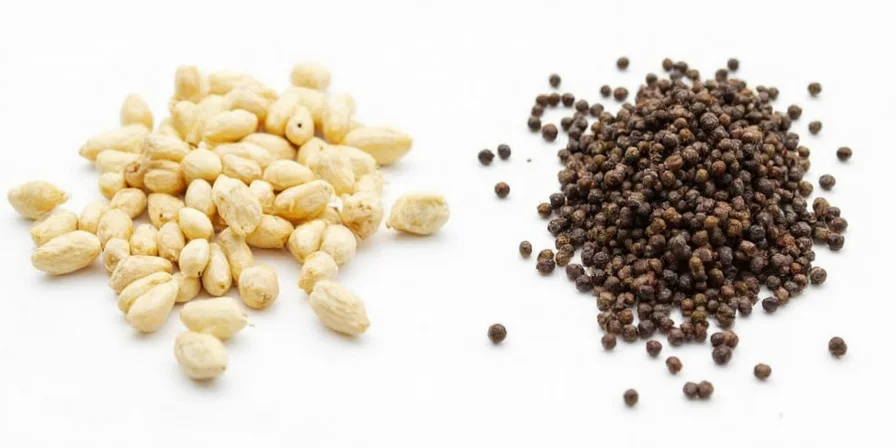
Tasting session comparing black and white pepper
Culinary Applications Guide
Selecting the right pepper impacts both flavor and presentation:
- Black Pepper: Essential for dishes where visual specks are acceptable—steaks, tomato-based sauces, marinades, and hearty stews. Add early in cooking to infuse base flavors.
- White Pepper: Crucial for maintaining visual integrity in creamy dishes (mashed potatoes, risotto), Chinese stir-fries, and light-colored soups. Introduce at the end of cooking to preserve nuanced flavor.
Pro Tip
For seafood pasta, use white pepper in the sauce but finish with cracked black pepper on the plate—combining visual cleanliness with aromatic complexity.
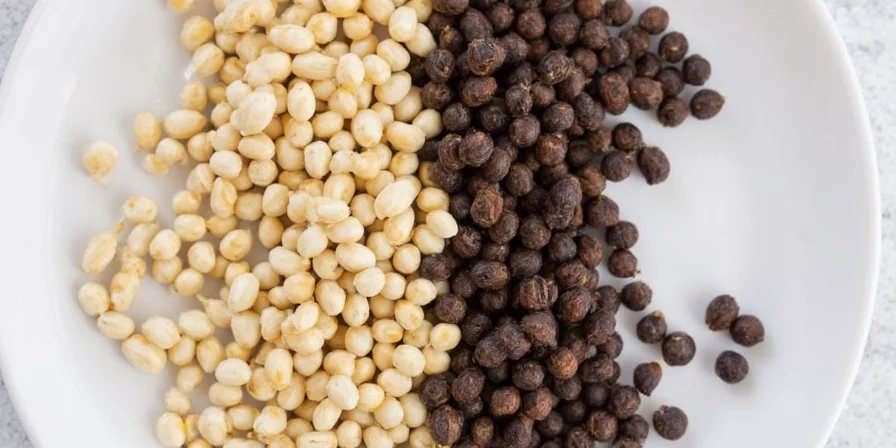
White pepper maintains visual appeal in light dishes
Optimal Storage Techniques
Maximize shelf life with these science-backed methods:
- Store whole peppercorns in airtight containers away from light and heat sources.
- Refrigerate white pepper to slow oxidation of its delicate compounds.
- Replace ground pepper every 3 months; whole peppercorns remain potent for 2-3 years.
- Never store near coffee or strong spices—pepper readily absorbs surrounding aromas.
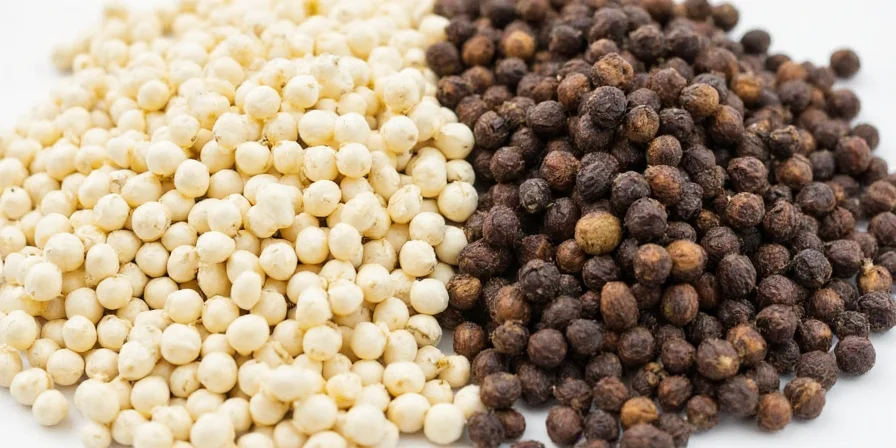
Proper storage preserves volatile flavor compounds
Top 5 Practical Usage Tips
- Timing Matters: Add black pepper early in cooking for flavor infusion; white pepper only at the end to preserve subtlety.
- Texture Control: Coarsely crack black pepper for steak; use fine grind for rubs. White pepper should always be finely ground.
- Heat Activation: Lightly toast peppercorns in a dry pan (160°C/320°F for 2 minutes) to enhance nutty notes without burning.
- Acid Balance: Counter white pepper's mustiness in potato salad with lemon juice or vinegar.
- Flavor Pairing: Black pepper complements red wine reductions; white pepper pairs with dairy and shellfish.
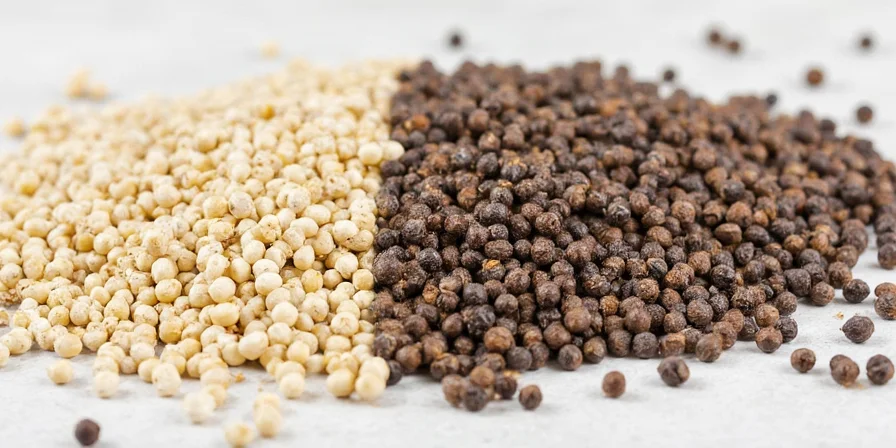
Grind pepper immediately before use for maximum aroma
Myth Debunking Analysis
Common misconceptions clarified with evidence-based analysis:
- Myth: White pepper is chemically bleached black pepper.
Reality: Natural enzymatic fermentation during soaking removes the pericarp—no chemicals involved. Industrial bleaching would destroy flavor compounds. - Myth: Black pepper is always spicier.
Reality: While piperine concentration is higher in black pepper, improperly fermented white pepper can develop sharper, harsher notes. - Myth: Substitution ratios are 1:1 in recipes.
Reality: Due to flavor volatility differences, use 25% less white pepper when substituting for black in cooked dishes.
Frequently Asked Questions
Why does white pepper sometimes taste musty?
The musty note comes from natural fermentation during pericarp removal. Properly processed white pepper has subtle earthiness, but over-fermentation or poor storage intensifies this flavor. Choose brands specifying "short fermentation" for cleaner taste.
Can I use green peppercorns interchangeably with black or white?
No. Green peppercorns are unripe berries preserved in brine or freeze-dried, offering fresh, herbal notes. They lack the depth of black pepper and earthiness of white pepper. Best used in sauces where bright acidity is desired, like Thai curry.
Does pepper lose nutritional value when ground?
Piperine degradation begins immediately after grinding. Whole peppercorns retain 95% of compounds for 24 months; pre-ground pepper loses 40% potency within 90 days. Always grind fresh for maximum bioavailability.
Why do some recipes specify "Tellicherry" pepper?
Tellicherry refers to large, late-harvest black peppercorns from India's Malabar Coast. They contain higher essential oil concentrations (4-5% vs standard 3-4%), yielding more complex citrus and floral notes. Ideal for dishes where pepper is the dominant spice.
Conclusion
White and black pepper are distinct culinary tools—not interchangeable variants. Their differences in harvest timing, processing chemistry, and flavor volatility demand intentional usage. Understanding these nuances allows precise flavor engineering: black pepper for bold foundational notes, white pepper for subtle finishing touches where visual presentation matters. By applying these insights—from historical context to modern storage science—you'll transform pepper from a generic seasoning into a strategic culinary asset. Remember: the right pepper choice isn't about preference, but purpose-driven precision.
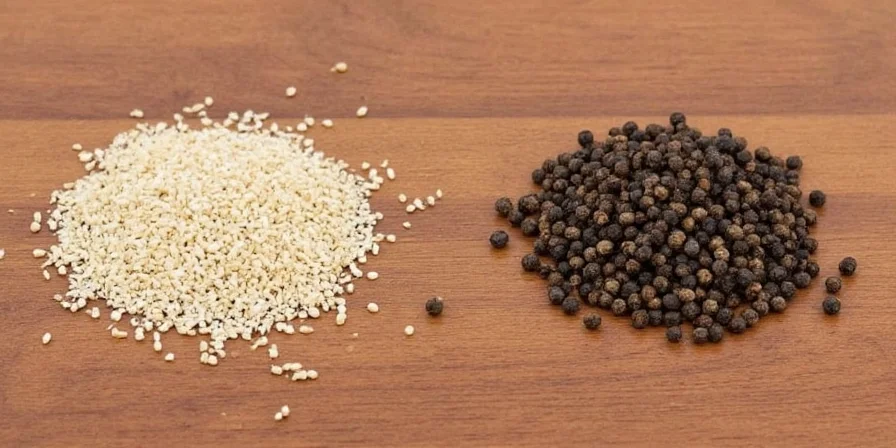
Peppercorn diversity reflects intentional cultivation choices











 浙公网安备
33010002000092号
浙公网安备
33010002000092号 浙B2-20120091-4
浙B2-20120091-4